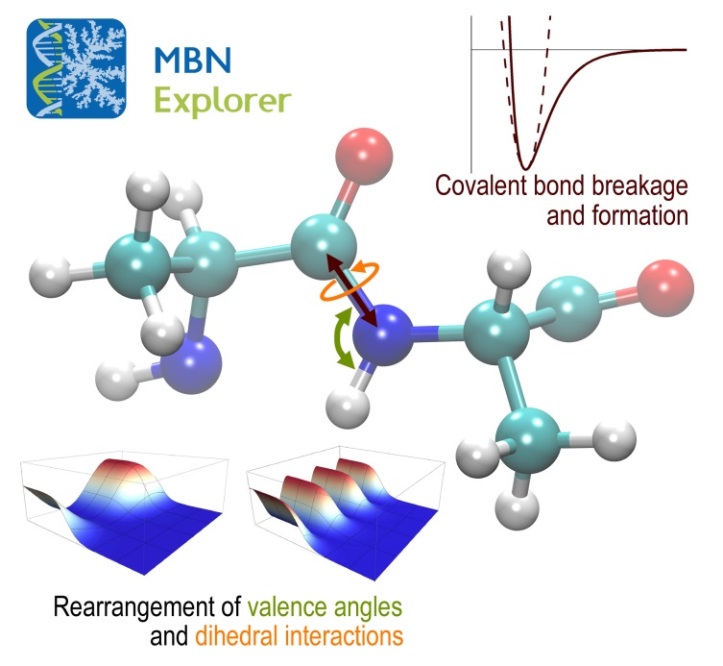January 21, 2016

The paper published recently in European Physical Journal D (EPJD) [1] by the members of MBN Research Center reports on the development of an extended version of the CHARMM molecular mechanics force field that permits classical molecular dynamics simulations of systems with dynamically changing molecular topologies, the so called reactive CHARMM force field. The new force field was implemented in the recent release of MBN Explorer. This implementation was accompanied with several illustrative case studies demonstrating a proof of principle of the reactive CHARMM force field in various fields of application.
The reactive CHARMM force field takes into account additional parameters of the system, such as dissociation energy of bonds, bonds multiplicity, partial charge redistribution and the valence of atoms during the bond breakage and formation. The functional form of the CHARMM interatomic interactions has been adjusted to account for the finite dissociation energy of the chemical bonds. The modified molecular mechanics force field can be applied for studying processes where rupture of chemical bonds plays an essential role, e. g., in thermally, irradiation- or collision-induced damage, transformations and fragmentation processes involving biomolecular and nano systems.
[1] Gennady B. Sushko, Ilia A. Solov’yov, Alexey V. Verkhovtsev, Sergey N. Volkov, and Andrey V. Solov’yov, Studying chemical reactions in biological systems with MBN Explorer: implementation of molecular mechanics with dynamical topology, Eur. Phys. J. D 70, 12 (2016).